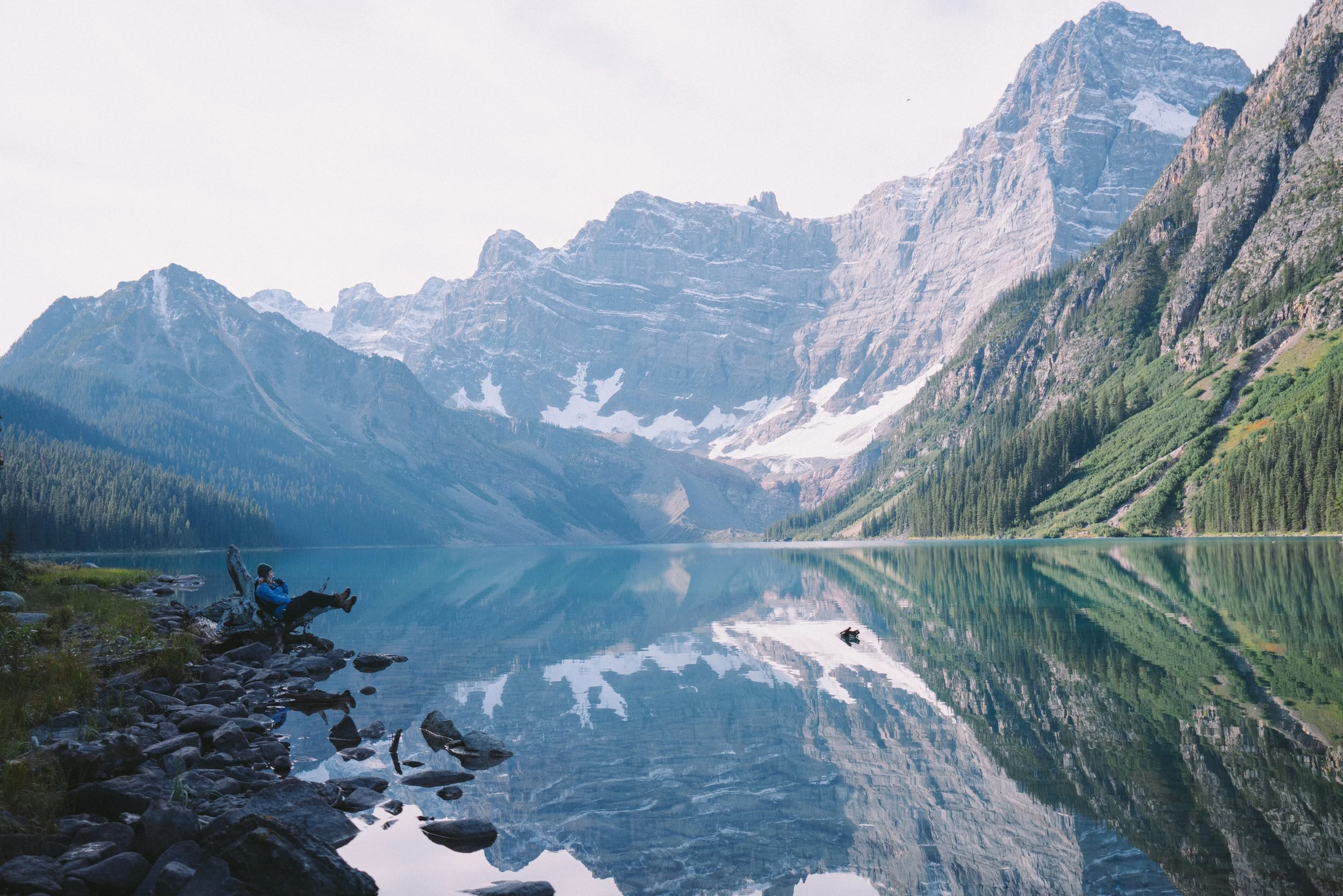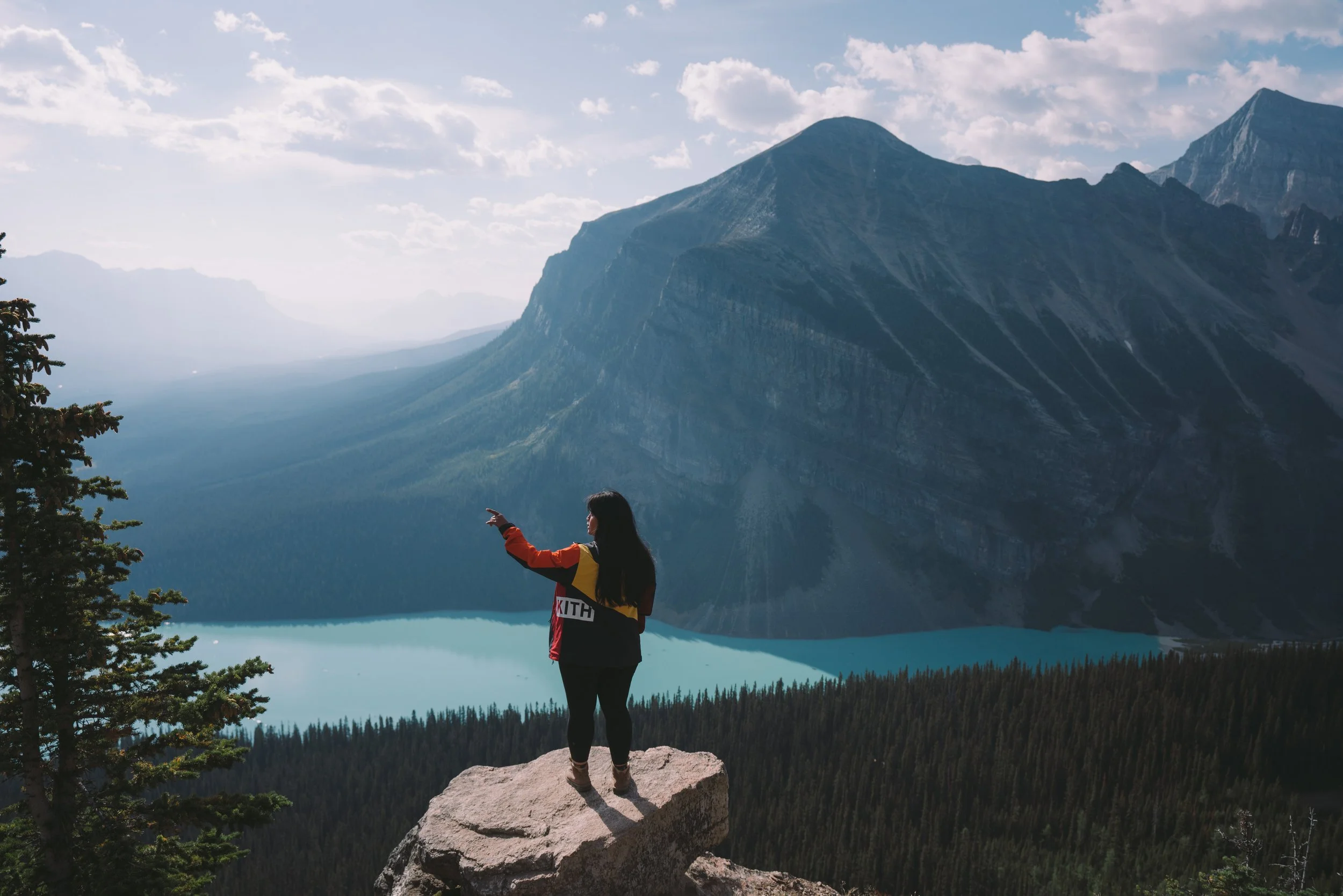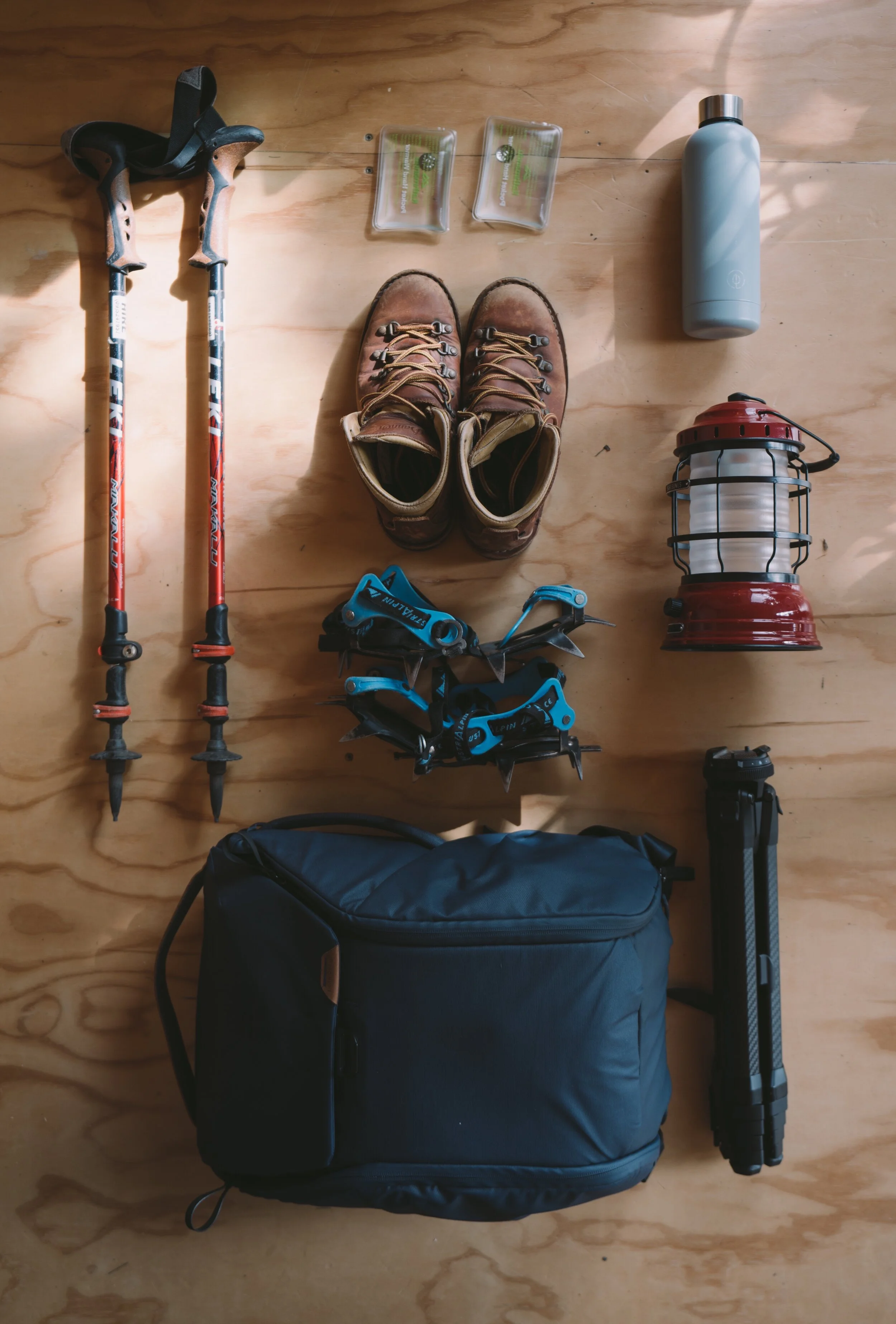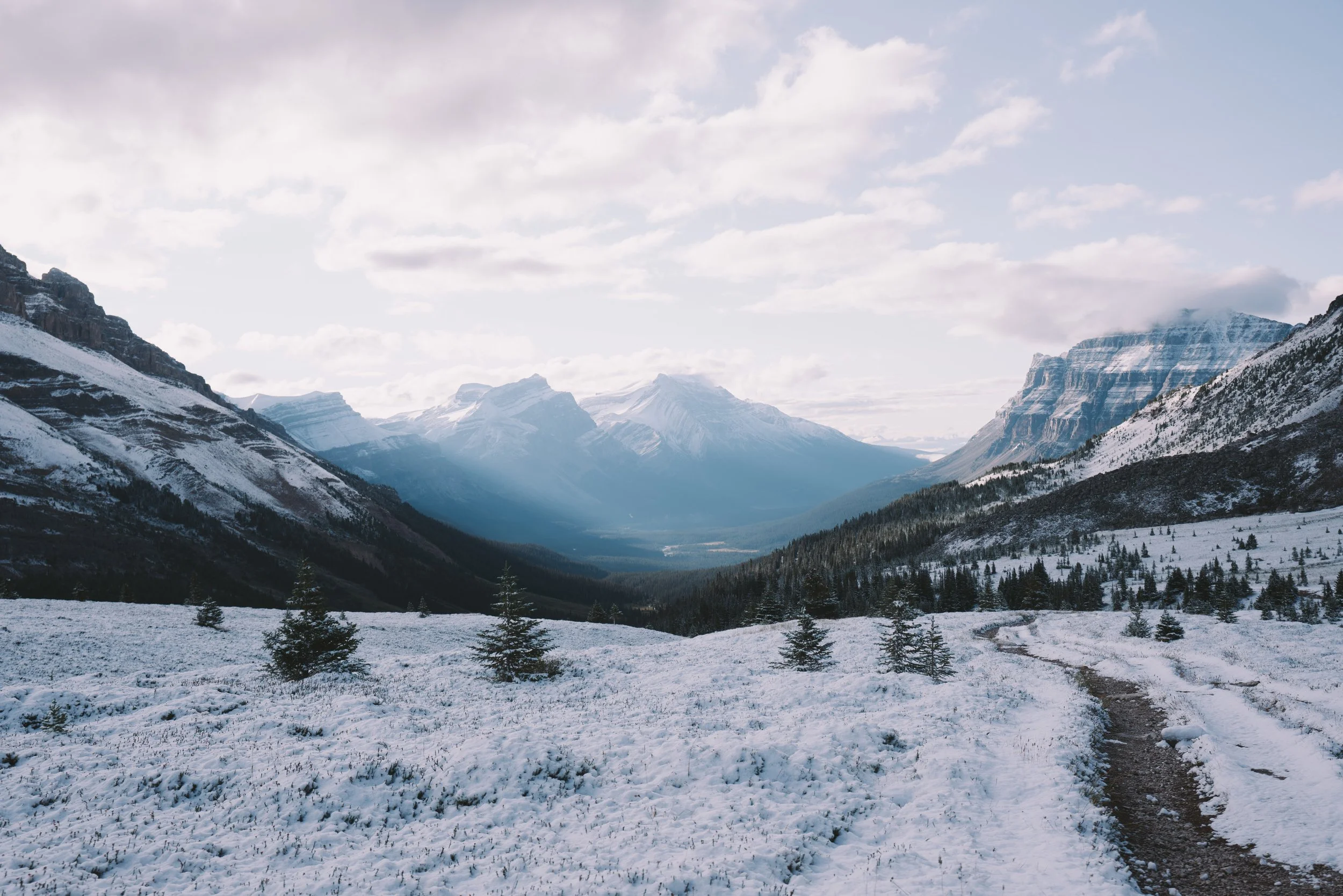How to Plan A Hike
It’s hiking season in the Northern Hemisphere and it is gorgeous! Here alone in British Columbia, there are endless turquoise lakes, wild, raw coastlines and insane mountain views to discover. But sometimes it can be daunting to just to even start! Learning a new hobby/sport can at first be intimidating. If you are ever feeling this way, remember we have all been beginners at some point. Here I’ve collated a list of beginner tips and things I wish I knew before I started hiking. I hope this gives YOU the confidence and strength to hit the trails, fully prepared! (P.S. Listed last is the number one most important one!)
Consider The View
\
What do you want to see more of? What makes you feel more balanced at the end of a trip? Do you want to feel the ocean breeze, hear the tranquility of a forest or be in awe of the heights you’re reaching? Do you want to have a refreshing dip in an alpine lake or spot particular wildlife?
I’m very much a rewards hiker (meaning sometimes the destination is just as important or more to me than the journey!) so considering what kind of view really brings me at peace at that particular day is very important.
Gauge your fitness (but don’t be afraid to push yourself!)
Everyone knows we’re not all the same, so why are we expecting to be at each other’s fitness levels? Only you can know your own body. At the start of summer, I will usually head on trails that are much shorter and flatter, just because I would have not moved as much during the winter and autumn months. I’ll gradually take it up until I feel confident enough to achieve hikes I have had my eye on!
I keep a Hiking Journal that records everything - from the basics like elevation and distance to more personalised notes like how hard I found it at the time. Tracking my fitness this way works best for me to prepare myself for longer, harder hikes because it relays to me how my body tackles these conditions.
Plan, plan, plan and PACK
I cannot stress how important it is to research the trail and ensure you have everything. Take note of the elevation and terrain of the trail to make sure you’re wearing the appropriate clothing/footwear. Will you need hiking poles for uneven ground or crampons for icy tails? How much water will you need (as a rule of thumb, you should aim to carry 1L for every two hours you’ll be hiking)? Will you need extra layers for the elevation? I tend to pack the night before just to make sure I give myself enough time to do it thoroughly.
For safety on your hike, you should always have a topographic map of the area you are hiking packed in a waterproof sleeve, as well as a compass for navigation. In New Zealand, these maps can be found in visitor centres, most for free.
My number one app for this is AllTrails and it’s usually my first go-to when I’m even just daydreaming of a hike. A feature I love is the comment sections of the trail that fellow hikers use to describe recent conditions! It’s so helpful in planning, especially with seasonal trails.
On my first ever proper hike, fuelled by instagram images and naiveté, I deliberately didn’t bring a water bottle because I thought it would “make my pack heavy”. I had all this camera equipment, had glanced at the hike information earlier that day, decided it was only going to be a couple of hours and said “she’ll be right”. Two hours later found me dying of thirst and about to give up. Luckily we had just reached the local tramping hut on the mountain and so was able to quench our thirst on a tap. But bringing no bottle meant we had no water for the descent, resulting in another miserable way back. That was the last time I made that mistake ever again.
Be Prepared for Wildlife and Practice Leave No Trace
This one may seem obvious but when you aren’t used to hiking, it can be easy to forget! Remember we share this planet and a lot of the time, we are actually walking through other creatures’ habitats. In general, wildlife tend to avoid humans, but they can sometimes react defensively if surprised by your presence. That’s why it’s best to make noise and staying aware when hiking. Depending on where you are and what critters live on the trails, you may need to bring gear to ensure your safety. On certain trails in Canada, bear spray must be on you and easily accessible, for example. If you’re hiking in an area with poisonous plants, you’ll want to wear pants, tall socks, or gaiters to protect yourself from accidental contact.
As for the Leave No Trace rule, this should be followed everywhere you go.
Pack it in, pack it out, stay on established trails and never take anything off the land.
Have a change of clothes in the car + extra water and snacks (post-hike)
This is more of a comfort tip but there is nothing like the feeling of changing out of your hiking boots and into clean, fresh socks and maybe some open-toed sandals. In clean clothes, hydrated and replenished, you’ll be in a better mood to take the drive home after a long day of hiking!
Let Someone Know Your Plans
This is the number one most important rule. Please make sure you have access to help.
You MUST let someone know your hiking plans beforehand. Let them know when and where you are hiking and when you plan to be back. Have a designated time/day that they must hear back from you. Also have an itinerary written and placed under the seat in your car. Accidents happen all the time and you don’t want to put yourself in a situation where help is not guaranteed.
If you can afford it, purchase a GPS device. Emergency devices provide a means to call for help, especially on hikes where phone coverage can be tricky. Maps can also be downloaded offline to refer back in case you get lost. This is an item that can be quite expensive so I would recommend purchasing one when you are confident that hikes will be a regular thing for you.
Here’s a little summary of all the above! Happy Trails!
-
What would you like to see? Establish what gets you looking forward to a hike.
-
Determine your fitness level and what you can handle.
-
Do your research and plan your trail. Pack accordingly and if possible, the night before.
-
Ensure you are prepared to encounter any wildlife and understand the Leave No Trace rule.
-
Pack a spare change of clothes, water and food to enjoy post-hike
-
The most important rule - let someone know where you are hiking and what time you plan to be back. Additionally, keep a written itinerary under your car. If possible, have a GPS device.





